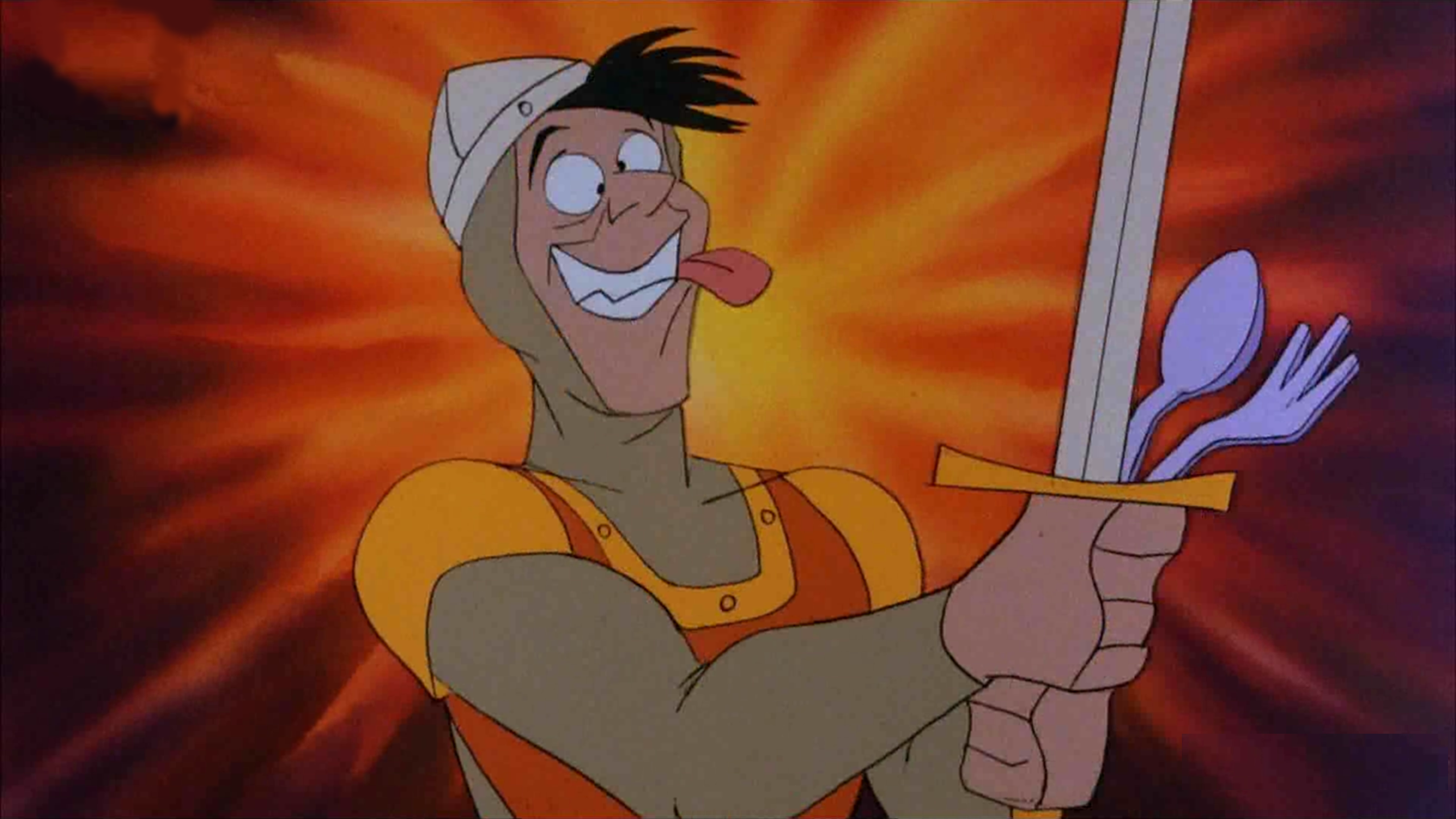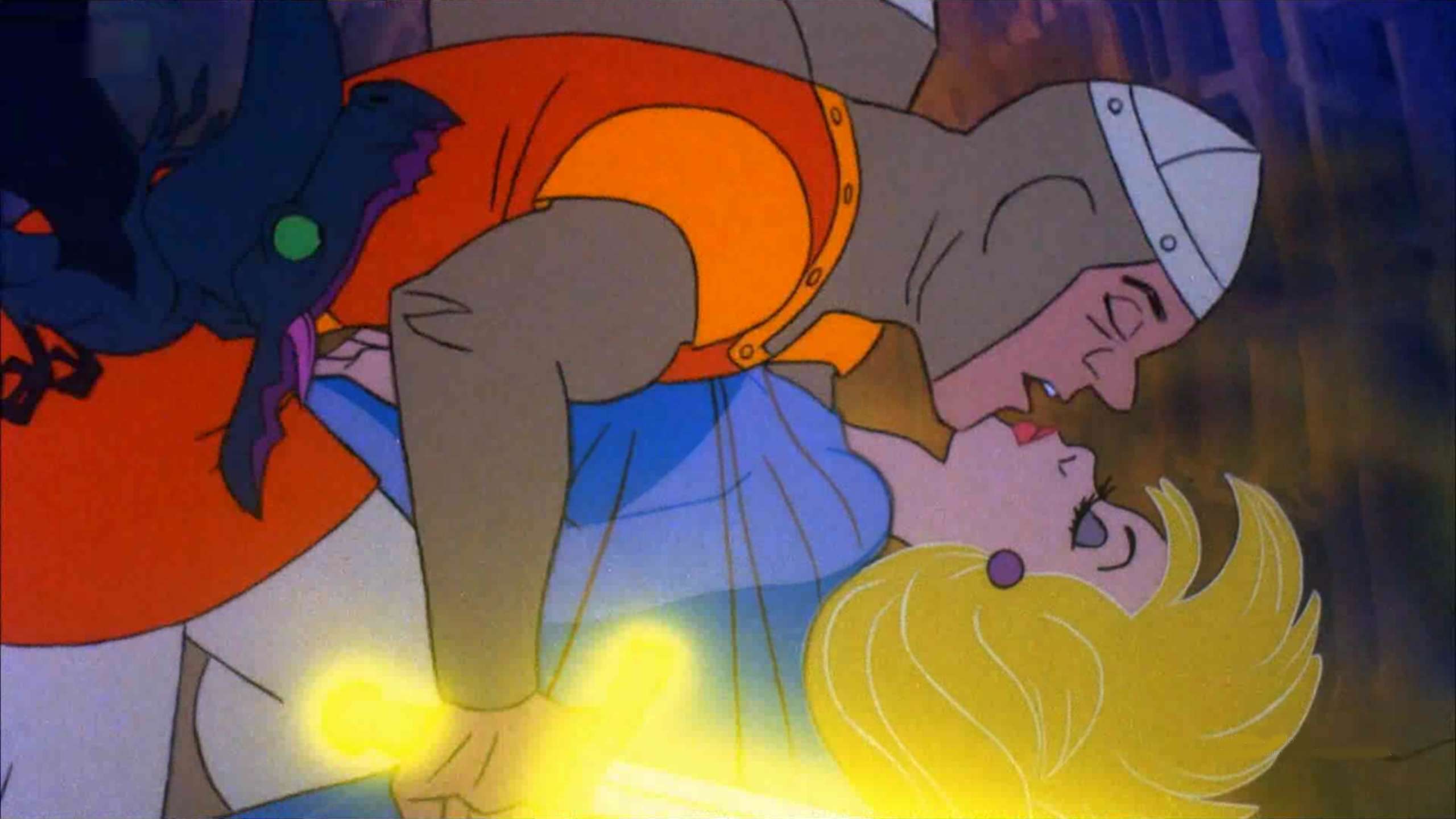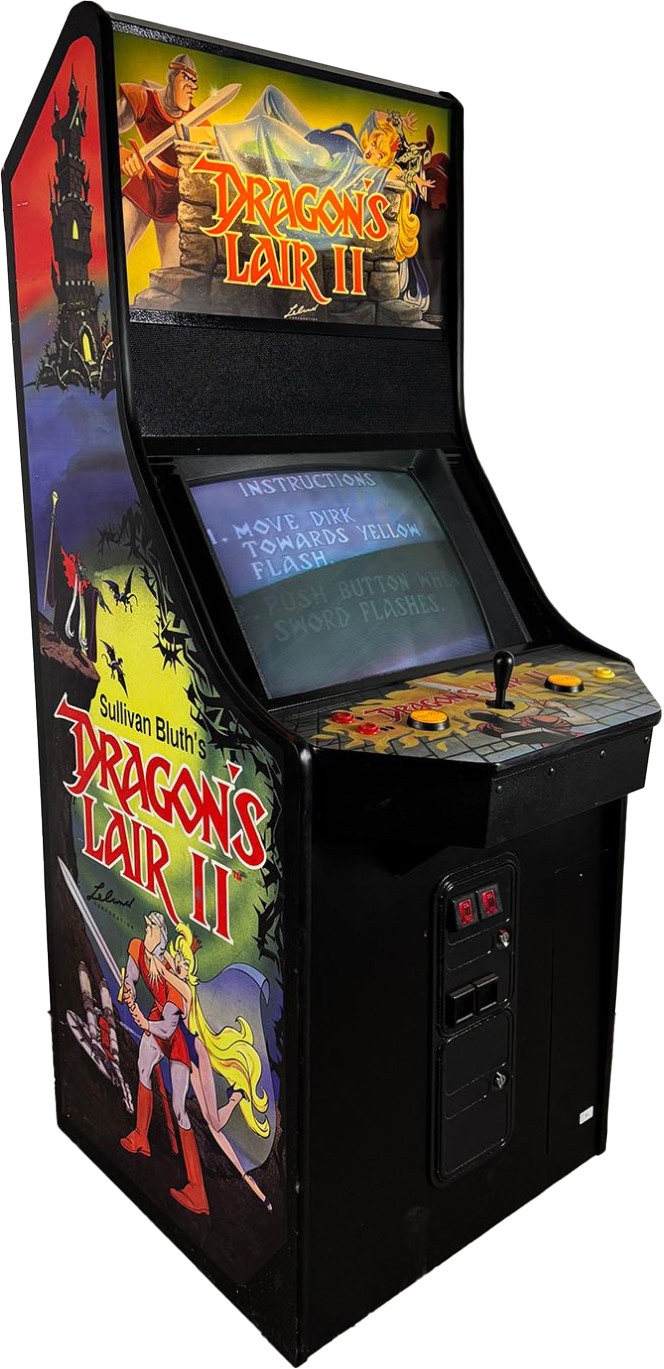Introduction
Released in 1991 by Leland Corporation, Dragon’s Lair II: Time Warp is the LaserDisc sequel to one of the most iconic animated arcade games of all time. Once again, players guide the brave (but bumbling) knight Dirk the Daring as he battles bizarre enemies and navigates surreal environments—this time across history itself. With stunning Don Bluth animation and punishing quick-time gameplay, Time Warp remains a cult favorite among arcade and animation fans.

Development and History
- Developer: Leland Corporation / Don Bluth Studios
- Publisher: Leland Corporation
- Release Date: 1991
Following the success of Dragon’s Lair (1983), animation legend Don Bluth and his team began work on a sequel in the mid-1980s. However, due to the decline of LaserDisc arcade technology and financial challenges, Dragon’s Lair II faced delays and wasn’t released until 1991.
The game was built using enhanced LaserDisc hardware, allowing for higher quality animation and smoother scene transitions. The development team leaned into parody and surrealism, drawing from fairy tales, historical settings, and pop culture to create a more diverse and humorous adventure.

Gameplay Video
Gameplay and Mechanics
Core Gameplay
Players once again control Dirk the Daring, this time on a quest to rescue Princess Daphne from the sinister wizard Mordroc, who plans to forcibly marry her. Key gameplay features include:
- Quick-Time Inputs: Like its predecessor, the game requires precise joystick or button input at exactly the right moment.
- Linear Progression: Levels follow a fixed path rather than randomizing scenes like the original.
- Scene-Based Structure: Each stage has a distinct visual theme—ancient Egypt, Beethoven’s symphony, Alice in Wonderland, etc.
- Timed Sequences: Some scenes include countdowns that add pressure and require quick reactions.
Challenges
- Timing Complexity: Input timing is even more exacting than the original, requiring memorization and reflexes.
- Punishing Animations: Incorrect choices result in elaborate (and often humorous) death scenes.
- Visual Overload: The fast pace and layered animation make cues harder to spot, increasing difficulty.

Cultural Impact and Legacy
Dragon’s Lair II didn’t match the revolutionary impact of the original, but it still carved out its place in arcade history:
- Don Bluth’s Artistry: The game is a visual showcase of hand-drawn animation at a time when 3D was emerging.
- LaserDisc Legacy: One of the last high-profile LaserDisc arcade games ever released.
- Cult Following: The game is still celebrated in retrospectives and re-releases.
- Modern Ports: Included in the Dragon’s Lair Trilogy for consoles and PC.

Fun Facts
- Extended Development: Work began shortly after the original game but wasn’t completed until nearly a decade later.
- Daphne’s Personality: She has more spoken lines in this game and plays a more active role in the narrative.
- Historical Spoofs: The game parodies Beethoven, Shakespeare, Cleopatra, and more.
- LaserDisc Evolution: Improved playback technology allowed for more fluid scene transitions than the first game.

Conclusion
Dragon’s Lair II: Time Warp is a beautiful, bizarre, and brutally difficult arcade experience. Though it arrived late in the LaserDisc era, its creative ambition, artistic flair, and tongue-in-cheek tone made it a memorable sequel. For fans of hand-drawn animation and classic arcade storytelling, it’s a game worth playing—or at least watching—again.

